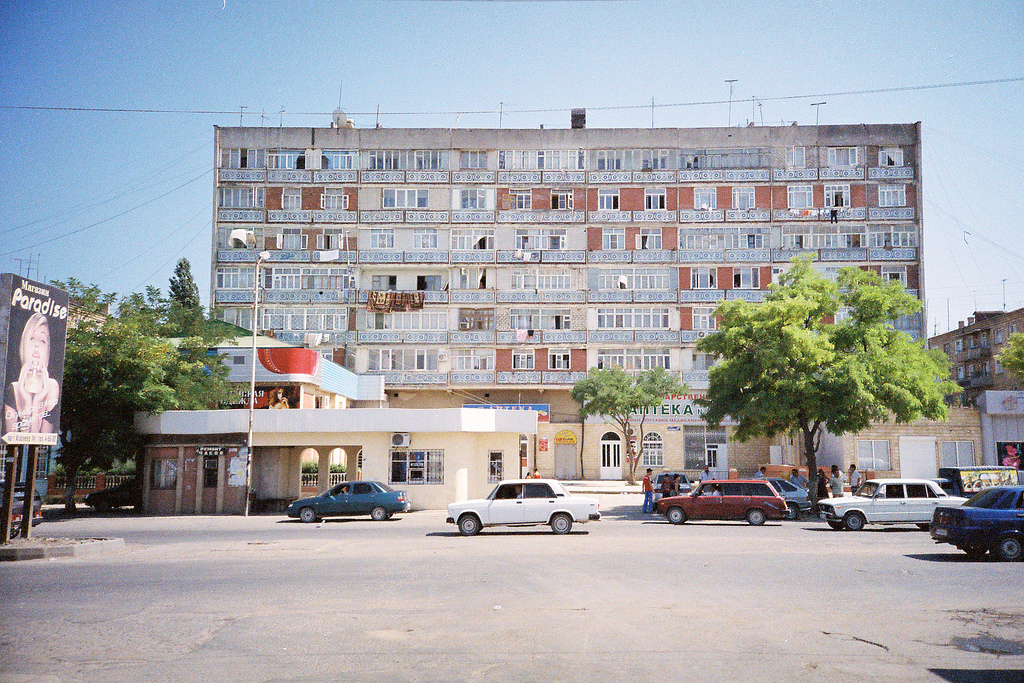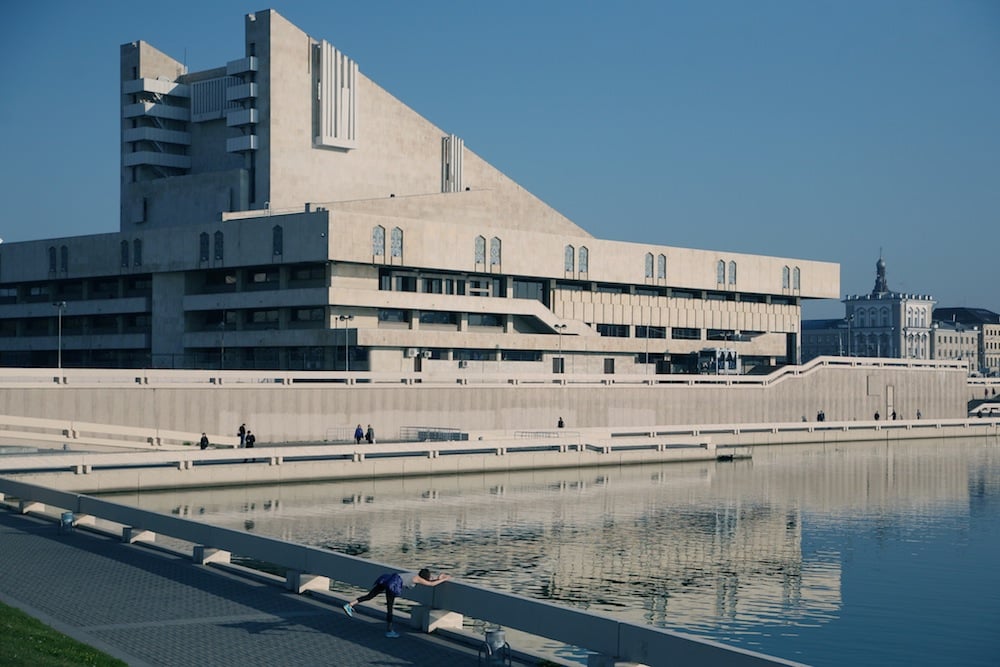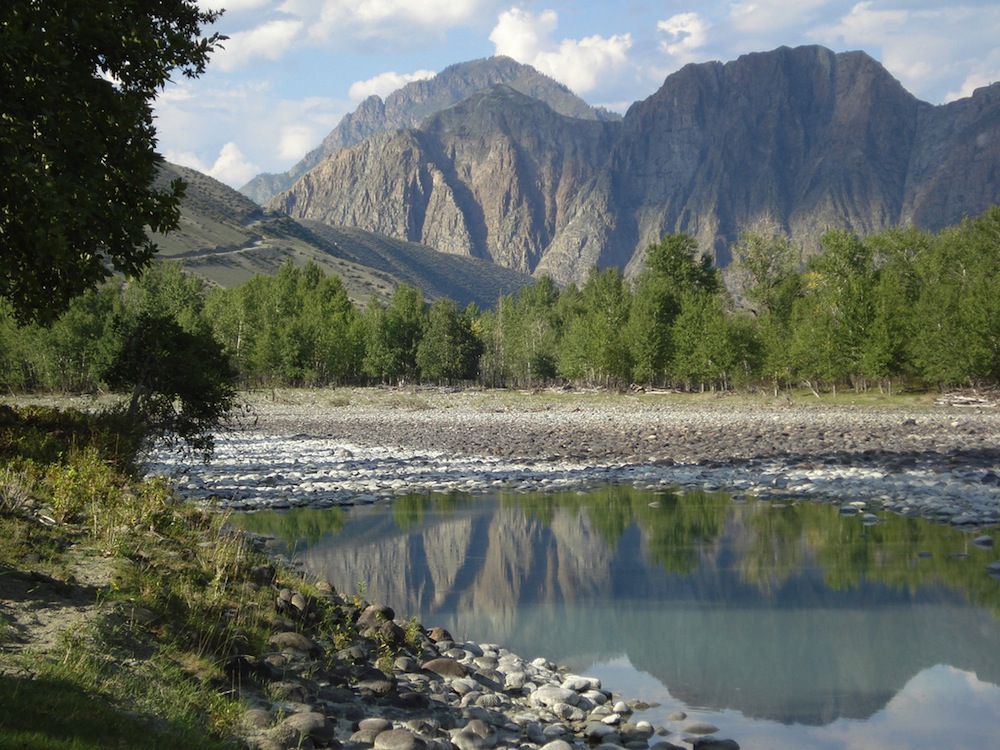Letter from: the heart of Chechnya

Destroyed in two wars and then rebuilt, Grozny has tried to move on and bury its trauma beneath brand-new edifices. Valeria Costa-Kostritsky spent a summer in the capital of the Chechen Republic
I spent two months in Grozny over the summer. When Ramzan Kadyrov rebuilt the city after two successive wars, he made a point of making it look impressive. There are the big avenues named after Vladimir Putin or Kadyrov’s father, the skyscrapers that light up their psychedelic lights at night saying “Thank you for Grozny, Ramzan”, the Heart of Chechnya mosque built after the Blue Mosque in Istanbul, the big shopping centres, the malls, the beauty parlours and the fast-food joints. And there’s the city that you can’t see, because it’s gone. The one that was, apparently, the most beautiful and the greenest of the North Caucasus before it was destroyed. Spending time in Grozny taught me that people don’t let go of memories easily. They transmit them. I feel as if I knew this second, invisible city, as if it was coexisting in my mind with the one that is there now.
Walk around Grozny in the summer and it’s quiet, clean, almost empty. People are having tea and soft drinks outside, in the cafes of the (somewhat ironically named) “Journalists’ Square”. Sometimes, on Putin Prospekt, there are more soldiers, standing in the shade with their machine guns, than passers-by. Now, unlike some years ago, a woman can walk around with her head uncovered, with no risk of being shot at with colourful paintball paint, or being stopped to be admonished. She’ll just get catcalls from men driving past.
Sometimes, fairly rarely, something bad happens. On my first day in town, a man shot a police officer in the blue overpass overlooking the main avenue. For some reason, CCTV footage of the murder went viral really quickly. Everyone was sharing it on WhatsApp. As I got to know Grozny better and started to know my way around the cinemas, the ice-skating rink and the sushi places, the invisible city started to appear. Before the war, Putin Prospekt, the main avenue, was called Prospekt Pobeda, which means “victory”. Kadyrov Prospekt, named after Ramzan’s father, used to be called Lenin Prospekt. People often still use the old names. At first, I got confused, looking for street names that didn’t exist on Google Maps.
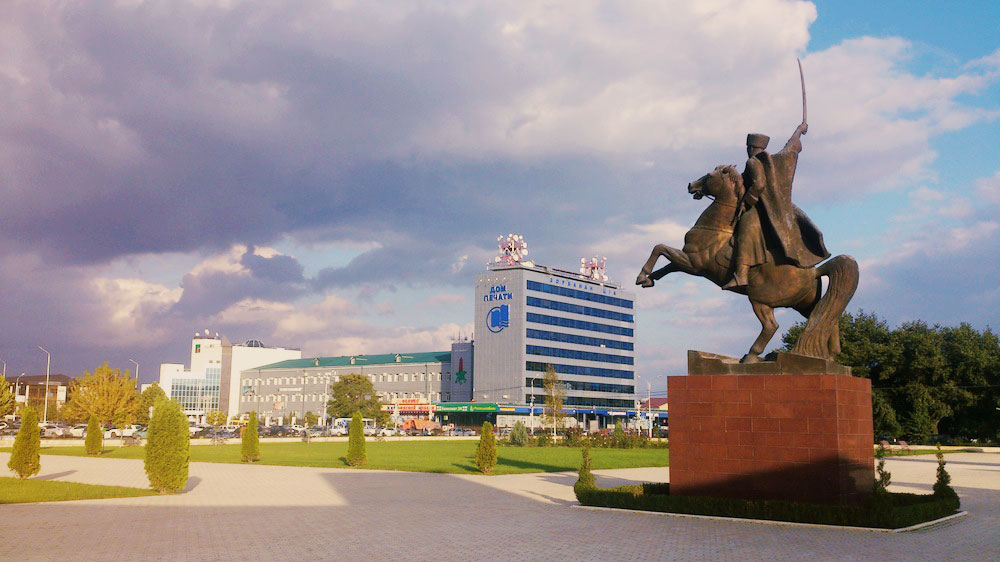
There’s a huge market in Grozny. But after a while, I realised that if people kept referring to my neighbourhood as “the old market” it was because the high towers where I lived had been built just where the huge central market used to be. In lieu of my street, between the two wars, there used to be a section of the market where one could buy any type of weapon — including hand grenades — so I always thought of grenades when walking past the shashlik joints on my way home. One warm evening, walking on Putin Prospekt with a friend, he told me he remembered when this same avenue was full of rubble, and when you had to be careful not to stumble. You wouldn’t know, just by looking at the smooth pavement.
In some places the scars left by the war are visible. I once visited a family that had two houses in their courtyard. A new one, and an old one, that was completely destroyed but for the basement, where they still store pickles and jams, and where they lived during the second war. After a while, I started asking people what they missed the most about the old city. Once, I was having lunch in an upmarket restaurant with a middle-aged government official who had just told me about grand plans to buy a very high tower called the “Akhmad” tower, after Kadyrov’s father. When I asked him what he missed most about the old city, I thought he would shrug it off in such fancy surroundings, but he didn’t. “Everything,” he said. “I miss everything.”
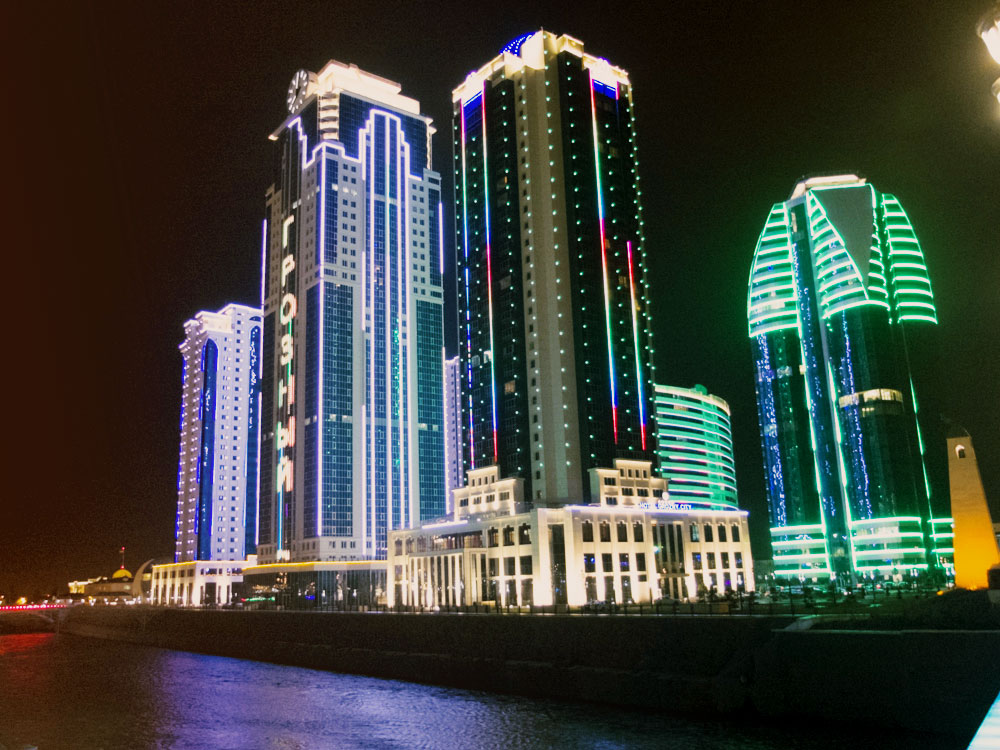
On 6 July, I attended a boxing match that had been hyped as unmissable by the authorities: the World Boxing Association heavyweight championship bout between the Uzbek Ruslan Chagaev and the American Fres Oquendo. For weeks beforehand, the centre of the city had been covered in huge posters of the boxers’ faces. Talking to young people I knew, I gathered that attendance was mandatory for male students and civil servants. If you didn’t turn up you could lose your student grant or get into trouble at work. Walking among a steady stream of men towards the stadium, I saw it was covered with a photo of a younger Putin (with more hair) and Akhmad Kadyrov. Managing to locate an area of the stadium where there were some women, I sat down to watch the show.
There were two stages, VIP seats at the centre of the stadium, giant screens and what looked like an extremely costly light show. Female Chechen singers covered from head to toe sung and danced on the main stage, taking small steps, hands fluttering graciously in the air. In Chechen tradition, it’s always been important for men to be good fighters. The evening began with a series of bouts that opposed Chechen and foreign boxers, who were sometimes considerably older. Chechens turned up wearing t-shirts emblazoned with Akhmad Kadyrov or his son Ramzan, while members of their escort waved Russian or Chechen flags. The Chechens won every single bout. There was cheering when the blows really hurt and when the foreigner fell.
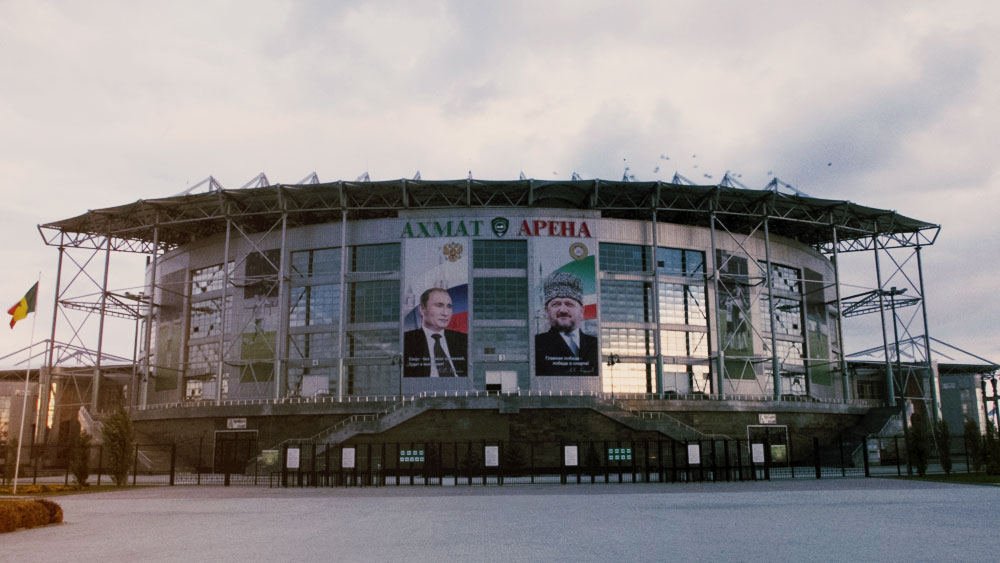
Gradually, the VIP seats filled up. Mike Tyson arrived, along with former heavyweight champions David Haye, Lamon Brewster and Evander Holyfield. I kept wondering how much the whole show must have cost. Kadyrov arrived after night had fallen, like a king. When his smiling face appeared on the giant screens people stood up and cheered. In between matches, an animated video showing an idealised version of Grozny appeared — including the glinting mosque and skyscrapers of Grozny City (which are rumoured to be half empty) — a perfect advertisement for a small city that dreams of being a new Dubai.
Before Chagaev and Oquendo entered the arena, a video promoting Chagaev was shown. In it, the Uzbek-born Tatar, whom Kadryov claims has Chechen ancestry, was dressed like an ancient Caucasian fighter with a sword. He appeared in a mock-up of an old Chechen village, surrounded by men wearing traditional hats and little boys dancing, before being shown training hard in Grozny. When Chagaev arrived wearing an Akhmat Boxing Club t-shirt, when the president hugged him and coached him during the fight, it was clear that he had to win — to save Chechen pride, to make up for losing the war, to show how great the current leader is. He eventually did win, on points, after a lacklustre match, and embraced Kadyrov. Then he shouted “Allahu Akbar” and the crowd chanted with him.
Kadyrov arrived after night had fallen, like a king
When I spoke to Eric Raskin, a boxing specialist, he left me in little doubt over how bogus this WBA heavyweight championship title was. “To recognise Chagaev-Oquendo as a championship fight is an affront to anyone who follows boxing. You had approximately the 10th-ranked heavyweight in the world taking on approximately the 40th-ranked heavyweight in the world, by any reasonable rankings system, and you’re calling it a world title fight?” he said.
A while later, I had the opportunity to see a completely different side of Chechnya when friends took me into the mountains. When we had driven a little way up, they told me to take my seat belt off — it had apparently became an unbearable offence to their driving skills as the roads became more dangerous. We stopped by a “ghost village” that had been left empty when Stalin mass-deported Chechens to Kazakhstan and Siberia in 1944 (many were killed during the round-ups, the transportation and the first years of exile). We looked at old tombstones covered in Arabic letters. We posed next to a statue of Zelimkhan, a Chechen and Ingush hero who raided Cossacks and Russian colonists at the beginning of the century and is now seen as a Chechen Robin Hood. We drove past Kezenoy-am, an incredibly blue lake that would be a major attraction if the republic were more appealing to tourists.
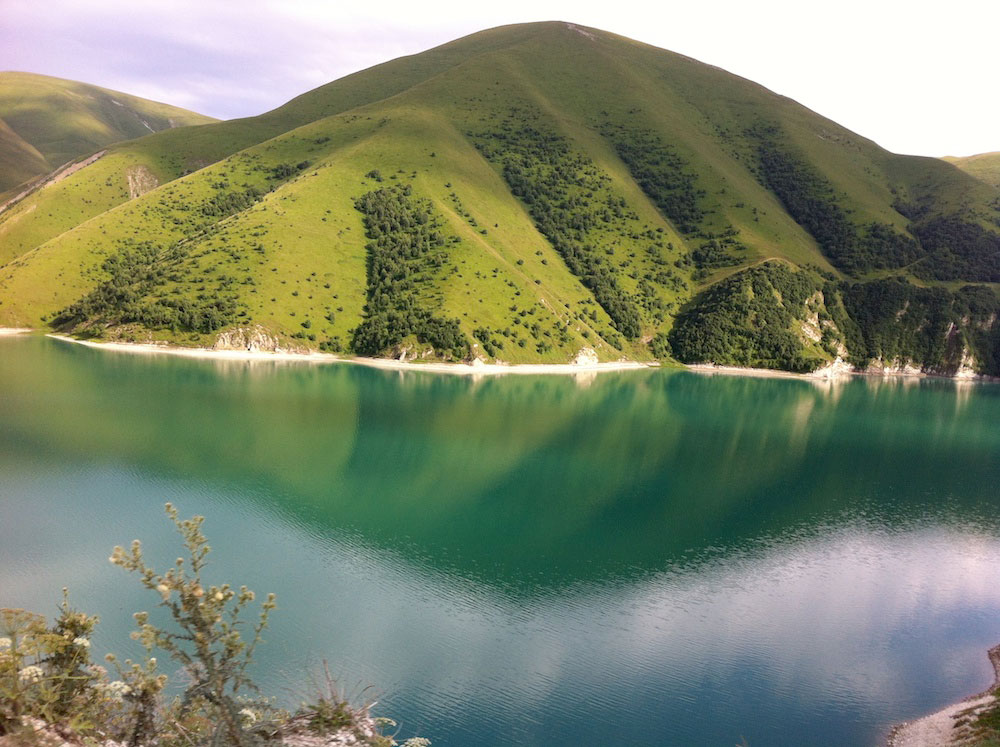
Then we drove through the clouds and couldn’t see anything for a while. At the end of a long road, we were welcomed by our hosts — friends of the driver — given way too much food in the Caucasian tradition, and shown around a house built above an old cave. “This,” my host said, as he showed me a series of vaults, “is where my ancestors are from, where they used to live”. And it all seemed so important to him, trying to preserve this, coming back to it after having been forced to go into exile during the war, that I took a series of terrible photos of the cave on my phone.
In the mountains, the weather kept changing. One minute it was sunny, the next a storm started and we watched thunder hit the surrounding mountains. It was beautiful out there, close to another idea of Chechnya, one that might well be a fantasy, where, like in the anthem created during the separatist times, Chechens “born at night when the she-wolf whelped” and nursed in “eagles’ nests”, would rather die than give up their freedom.
As a Chechen kid I know once put it, referring to the Game of Thrones saga, “If we are to believe the old anthem, Chechens are basically the Starks.”
“But,” he continued, “who really wants to be the Starks? By now all we want is peace.”
When the sun reappeared, we picked wild flowers and took them with us as we headed down to Grozny.
